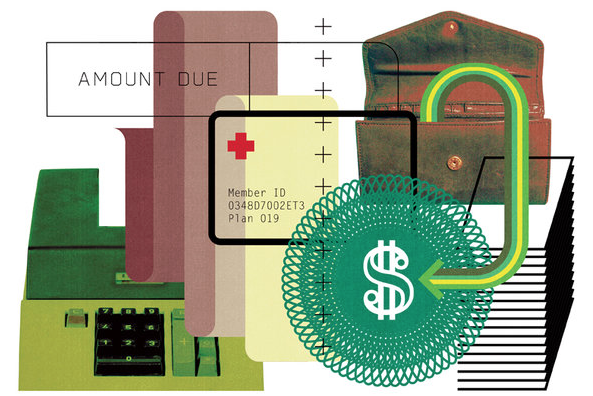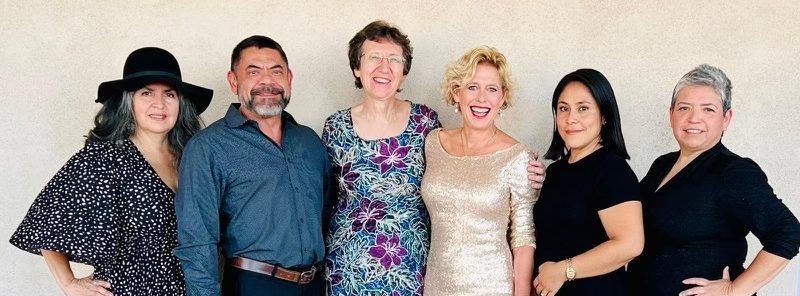 Blog Cancer Network December 29, 2014
Blog Cancer Network December 29, 2014
By Rebecca Bechhold, MD
The topic of the cost of healthcare in general and cancer care in particular is an emotionally charged issue. Often, the situation is described as a patient being forced to choose life or death when presented with a $20,000 to $40,000 monthly drug bill that has been deemed minimally covered by their heartless insurance carrier. In fact, the treatment offered has little or no improvement in survival in most cases. But that fact is never mentioned, because in the United States, we continue to push the idea that “you can’t just do nothing. You have to fight.” Even if you have no ammunition.
Dr. Peter Yu, president of the American Society of Clinical Oncology (ASCO), recently addressed the cost of cancer care at a meeting entitled “Patient Centered Oncology Care.” “Physicians can no longer be someone who does things to patients, but must be someone who does things with patients,” he said. It is also called shared decision making. As medicine has increasingly complex and expensive offerings for specific problems, we have to acknowledge that all of them are not appropriate for every situation. Every patient with chest pain does not need a catheter. Every progression of solid tumor does not benefit from yet another line of therapy. Just because we have a drug available does not mean it actually offers benefit.
A recent blog (see below) in the New York Times by a medical oncologist recalled his visit with a patient progressing on therapy yet again. He wrote “switching therapies was a euphemism for your cancer is progressing, a point I didn’t need to hammer home.” I respectfully disagree. It is very much a point that requires a frank discussion of what is happening and what, if anything, can be done to change the survival and quality of survival for that patient. This is exactly where it becomes labeled “Sophie’s Choice,” even though the outcome is not going to change one bit with further treatment. Multiple lines of therapy in stage IV solid tumors have diminishing benefit, and this is where patients and families need to know that the finish line is the same. You can take the expensive, toxic obstacle course or you can take the easier, cheaper, nontoxic route with excellent hospice care. The hospice patients live longer, stay out of the hospital and the ICU, and are more likely to die at home as preferred. Plus their bank account isn’t decimated.
My opinion is that doctors back down from these discussions because they are difficult and they want to be the hero to the patient at that moment. I wish more oncologists could hear what patients and families say when, a few weeks later, they are actively dying and their family members reflect back and say, “I don’t know why Dr. X wanted him to take that medicine. It did nothing and he was miserable.” I know-hindsight is 20/20, but it is not uncommon for the family to bring in a large bag of terrifically expensive medication they have acquired and ask me if I can give it to some other patient. What a sickening waste on so many levels.
It is not just treatments that need more thoughtful consideration; what about surveillance testing-CTs, PET scans, blood work? It is frequently ordered because “the patient wants it.” Well, I pay insurance premiums too and that is not how I want my risk pool dollars being wasted. It is worth the time to ask what the goal is of having that test. Then explain how random testing is unlikely to achieve that goal. I too dread those peer-to-peer calls when ordering a test. If it is turned down, most doctors will make nasty remarks about the insurer. But you cannot blame them when you knew there was no indication for the test. They are paying the bill so they get a say even if we sometimes find it to be irrational.
As a hospice CMO, I am asked multiple times a day about coverage issues-drugs, procedures, radiation, etc. I detest that part of my job. I do not like being the “decider,” but that is my job. As you may know, nonprofit hospice programs have a razor-thin operating margin, so my rule of thumb is that I will pay for anything that makes the patient feel better. But I say no to a lot of useless drugs and blood tests that have no influence on patients’ comfort. I cringe at the thought of a nurse hanging up the phone, turning to a family, and saying, “Dr. Bechhold said you can’t have that,” with no medical justification given. I always explain my reasoning to the nurse so that she can educate the family, and that works the vast majority of the time. It still makes me squirm, though, to think I sound like a cold, heartless something.
What if we had an authoritative source made up of several physicians who could take an objective view of treatment decisions? Oh wait, we do-clinical guidelines, National Comprehensive Cancer Network guidelines, ASCO guidelines. I know they are not perfect! But I am willing to invoke their authoritative voice to provide support to my recommendations when it may be reassuring to patients. Basically I am saying, “I am not making this stuff up!” I want to provide as much information as they wish as we make choices together with their best outcome the ultimate result.
Oncology is an emotional job, but we have to use our head to make wise choices with our patients. Hopefully, they know they have our heart.
The Punishing Cost of Cancer Care
By Mikkael A. Sekeres, M.D. December 11, 2014 10:58 am
“I think it’s time to switch therapies,” I told my patient, as he and his wife sat next to each other by the wall of my exam room.
He stared at me, unblinking, through his chipped, wire-rimmed glasses as his wife looked quickly down at the medication list she clutched in her hands. Her worn purse sat on the floor by her chair. “Switching therapies” was a euphemism for “your cancer is progressing,” a point I didn’t need to hammer home with them – they both knew the score.
“O.K.” he said, taking a deep breath. “What’s next?”
We had been navigating his cancer together for a year-and-a-half, balancing the most effective treatments we could devise with what his health insurance would cover, and what he could afford. The 90-mile drive to Cleveland was itself an economic strain, gas prices being what they were and their aging car becoming increasingly more finicky, particularly during the cold winter months.
“The next drug I’d suggest is a pill that you’d take every day. It can get you into a remission, and may even allow you to live a little longer. It’s the one we’ve talked about before,” I told him. He nodded, remembering.
“The real expensive drug?” he asked.
This time I nodded. When I first suggested he take this pill as part of his chemotherapy regimen, I warned him about the possible cost, as this has become a part of my standard informed consent process. I review potential risks, benefits, alternative medications, the people involved in a patient’s care, and now economic risks.
After checking with his insurance plan, which did not cover chemotherapy pills the way it did intravenous chemotherapy, I had the unpleasant task of telling my patient that the medication would cost him $5,000 per month. At the time he had laughed, a mixture of surprise and incredulity. He was too well-off to qualify for patient assistance, but too poor to afford the drug. His face was grave now.
“I won’t bankrupt my family for a month or two more time,” he said. “I have to leave them something.” His wife looked up briefly, about to interject, but remained quiet. This was ground they had already covered, and she would make her case for his taking the pill when I wasn’t present. They were private people, proud, and wouldn’t disagree with each other in front of someone who wasn’t family.
As the price of chemotherapy now routinely reaches $100,000 for a full treatment course, my patients are forced more and more into making the equivalent of Sophie’s Choice when it comes to treating their cancer: Spend down their savings for an improvement in survival that might amount to a few weeks, secretly hoping that they will be one of the lucky few at the “tail” of the survival curve – the handful of people who live years more; or decline the therapy and in so doing ensure that their families will be provided for after they have died.
I had to wonder whether anyone should be forced to make such a decision.
My patient and I discussed a couple of other treatment options, and ways that he might receive his therapy closer to home, a plan that made him visibly relax.
“Not that we don’t like seeing you,” he joked. His wife didn’t smile, though. Perhaps she wasn’t ready yet to let him go, or didn’t agree with his reasoning that she would be destitute if he chose the pill. Maybe she was incensed that hard-working people like themselves would be placed in such a quandary precisely at the time of their retirement, and in such a wealthy nation. The way she set her mouth, I guessed it was a combination of all three.
“I’ll miss seeing you,” I told them both as we all got up to leave. There was nothing else I could say – this was the part of cancer care I didn’t have the tools to fix.
Credit: Panaxea






